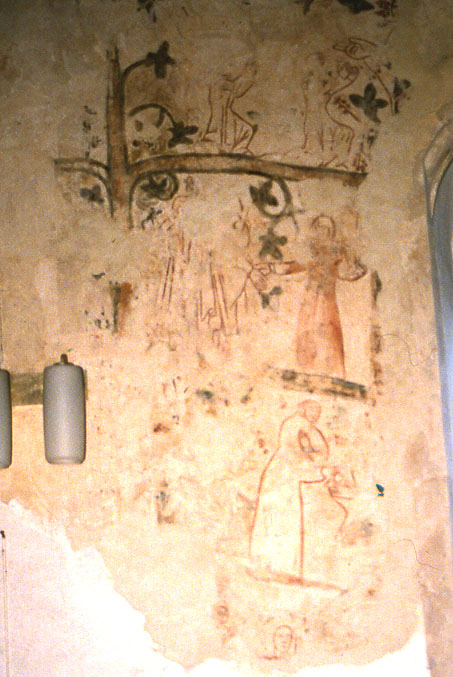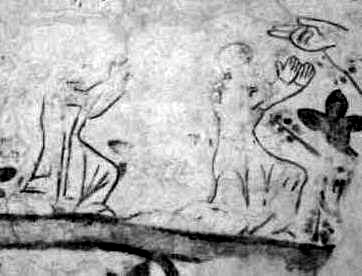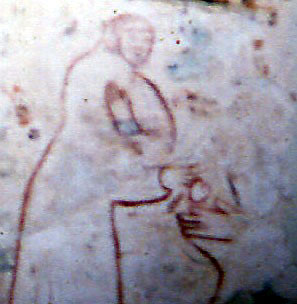Edingthorpe, Norfolk (†Norwich) C.14
The Seven Works of Mercy

The painting is now fragmentary, but it is interesting as an example of the subject that probably includes the donors who caused it to be made. The structure is based on a symbolic tree, not unlike those found in paintings of the Seven Deadly Sins, a parallel and antithetical subject. The donors are, I think, the two kneeling figures appearing, hands raised and extended in prayer, at the top above the first main branch of the tree springing from the trunk (b/w detail, below right). They may be a man and a woman - it is hard to tell now - but visible to the right of them is a hand extended in blessing and/or invitation. It probably belongs to God, and there must at one time have been more of the subject beyond this, above and to the right of a window (eastward).

But parts of two scenes and a small fragment of a third remain. Below this first branch is a scene in which a figure at the right, apparently female and with some red pigment remaining in her skirt, grasps the wrist of another figure, possibly the nearest of two (I suspect there is another figure to the left), in a gesture of invitation. This might be any one of several of the Works - Receiving the Stranger is perhaps the most likely.

Below this, and below part of another branch, a figure, again probably female and with her left hand held to her breast, drops a heart-shaped object, something quite possibly purely symbolic and signifying Caritas or Charity, into an extended hand which is all that remains of the recipient (detail, right). There are faint traces of another branch, and below that, at least one and probably several more, small heads - the remains, I think, of another of the Seven Works.
One other painting, a St Christopher of the same period as the Seven Works, has been uncovered at Edingthorpe, but there are thought to be others under the plaster, and these may one day be uncovered in turn.